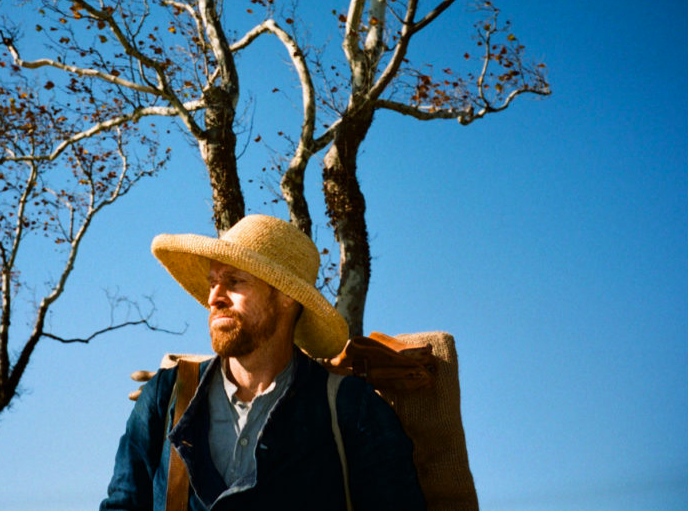At Eternity’s Gate
Dafoe’s van Gogh Is A One Man Show
Originally printed in Compass, December 12, 2018.
American painter and director Julian Schnabel (“The Diving Bell and the Butterfly”) opens “At Eternity’s Gate,” his film depicting the last stretch in Vincent van Gogh’s life, through the artist’s eyes. It’s a recurring motif. The shaky, handheld camera mirrors the frenetic movement of van Gogh (Willem Dafoe), holding tight on faces that stare back at him — back at us — mostly with confusion, or hostility, even trepidation and fear. By the last act, these shots begin to blur and degrade. What were once unedited cuts become quick, choppy, almost unintelligible. When van Gogh sobers from his fever state, claiming no memory of the past events, we are with him, as culpable and confused.
Any film about Vincent van Gogh cannot help but play with the audience. The Dutch artist who sold only one piece of work before his death in 1890 has posthumously become the most recognizable, romanticized, and popular painter of any and all time. This tragic twist may be deeply engraved into the story of the “misunderstood madman,” but by its nature it undercuts the audience’s ability to watch a recreation of his story unfold without the distancing effect of dramatic irony. Our present culture is so reared from an early age to recognize the works of van Gogh as “Art” with a capital A that it takes an education of the 19th century climate to begin to understand what made his colors and brushstrokes and vision such a displeasure to his contemporaries.
What Schnabel more readily attempts to tackle is what made van Gogh the man unwanted, and so with a sense of artistic dream-logic, casting craggily 63-year-old Willem Dafoe as 37-year-old Vincent Willem van Gogh is pure visual storytelling. Dafoe’s face, dominating the screen so completely you will become familiar with ever ginger whisker and shade of turquoise in his eyes, aches with a failure that cannot be attributed to youthful folly. Schnabel corrects the audience’s gaze with his casting so that we don’t see van Gogh as a young genius cut down before his time, but as a man so worn down, inside and out, by his disconnect from the world, by his potentially schizophrenic mind, that his death is as much about a sense of decay as a bullet wound.
Still, Dafoe’s performance is magnetic magic, and a testament to the momentary intimacy that can be conveyed through the screen. More often than not there is a sense of joy and sparkle, and an uncomplicated, child-like sense of purpose reflecting across Dafoe’s face. He is both handsomely spry and deeply weathered. Alas, he is so infectiously watchable the film instantly weakens when he leaves the screen. In his place we’re subjected to heavy–handed lectures from both a snooty Paul Gauguin (Oscar Isaac) as he urges Vincent to change his technique, and from a patronizing priest (Mads Mikkelsen) who disbelieves that God wanted such paintings to exist. When we look at van Gogh’s work — “Portrait of Madame Ginoux” — and hear their skepticism, they become characters so outside of our visual experience that they are impossible to understand.
The best portions operate in near silence apart from the piano-based score, as van Gogh wanders the pastures and rocky cliffs of Arles. Wearing his yellow straw hat, the world around him takes on the colors of his paintings. Or did his paintings take on the colors of the world? Here “At Eternity’s Gate,” while maintaining an unfussy sense of naturalism, conjures the hues of “A Wheatfield with Cypresses” into reality— gold and celadon, pine green, stone gray and a cornflower blue sky. We regard the tones and textures and sunflower–yellow light of the Provence region of France just as he does. We share in his wonder, and soon recognize what the painting will become as he hurries ecstatically to build it, thick and dimensional on the canvas. It is in these scenes the film works with his fame, and we are Vincent.
